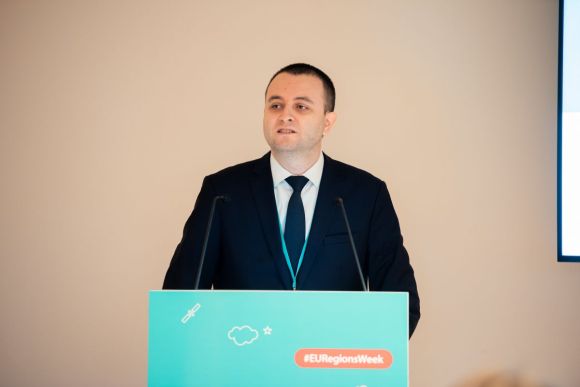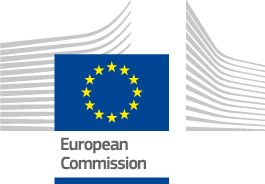
2007 was a big year in both Romanian and Bulgarian history. On the 1st of January the two Eastern-European countries joined the rows of the European Union which marked the beginning of the transition from post-communism era to a democracy-liberal one.
Now, 12 years later, Romania and Bulgaria have changed significantly, but are still considered the worst two among their bigger brothers and sisters in Europe. Problematic and slow-developing economy, lowest wages in the EU, demographic crisis and sky-rocking immigration levels are just a few of the issues that the citizens face on an everyday basis. In fact, Bulgaria is the fastest-shrinking nation in the whole world. The Balkan state has also the poorest region in the European Union, situated in the North-West part of the country. Two other Bulgarian regions rank 3rd and 4th among the 5 poorest.
Despite the fact that the European Union has managed to face a constant and uninterrupted economic growth in the past 7 years, the Balkans is a region which seems to have always lived in the shadow of the EU. The region is failing to make a significant representation and development progress of itself over time. But, on the other hand, Bulgaria and Romania were accepted in the EU only 12 years ago, which is roughly five times lower as a time period compared to some other member states.
A closer cooperation
How has the European Union affected the lives of citizens in the area is a question with a quite spectacular answer colourway. The RO-BG part of the EU is an example of the ones which have benefited the most from the financial support of the Union on multiple levels. Back in 2014, 25% of EU’s total expenditure was assigned to the less-developed countries (which include Croatia, Poland and Hungary as well).
Of course, such problems cannot be tackled only with EU funds, but require closer cooperation between the two neighbouring countries. And such cooperation must be performed not only on capital to capital basis, but most importantly on a regional one, including citizens and authorities from smaller and less developed districts.
If fact, such initiatives have already been taking place for almost three decades.
2020 will mark the 30th anniversary since the foundation of the Interreg Romania-Bulgaria, a programme financed by the European Regional Development Fund. It focuses primarily on the improvement of the border area between the two states by financing joint projects (which in the case of Bulgaria includes the poorest parts). The total budget of Interreg RO-BG is 258.504.126 Euros, 15 % from which come from the countries themselves (including 2 % own contribution).
The programme for cross-border cooperation
It consists of six different pillars, the first three of which are as follows:
- A well connected region (96,450,936 euro)
- A green region (63,454,564 euro)
- A safe region (48,225,468 euro)
Interreg is one of the two goals from the EU cohesion policy (2014-2020), which aims to tackle disparities within the union by supporting numerous projects on a local and regional level, as well as empowering the different layers of government in the member states. The EU Cohesion policy accounts for up to 1/3 of the overall EU budget for 2014-2020, or 351,8 billion Euros. 182 billion of that sum is acquired to the less developed regions, such as Romania and Bulgaria.
The cross-border partnership is one of a total of four strands of cooperation within the Interreg programme. The territory which is included in Interreg RO-BG covers 70,000 square km, including the most Southern parts of Romania and the most Nothern of Bulgaria respectively.
Such kind of local economic and political cooperation is indeed crucial for the development of the region, having in mind that neither of the states holds membership in the Schengen area. As the main target of the Interreg RO-BG is the “well-connected region”, the area still experiences low levels of connectivity, having only two bridges across the Danube river to connect the countries on their water border, besides the ferry connections. In 2018, more than 7,4 million passengers crossed between Romania and Bulgaria, with 3,1 million vehicles. All of this contributes to the fact that all main crossroads are overloaded (people wait for hours to pass through border control).EU and non-EU citizens. Because the Schengen area doesn’t apply here.
The "master plan"
The 500km water border and the scarcity of pathways to cross over is the main problem which has to be tackled according to the deputy mayor of Ruse, Strahil Karapchanski. Ruse is the largest Bulgarian city situated in the Danube, with one of the two bridges, connecting the neighbouring countries.
The biggest issue appears to be that the Danube bridge in Ruse has only one track for vehicles in each direction, which is a major issue for people travelling every day across borders for work.
There are still a lot of obstacles for the Bulgarian-Romanian cooperation, both mental and physical, as the language barrier for example, but I reckon that we must look at them as positive challenges. Since both countries became members of the EU, local communities started to turn to each other, communicate, dream, work and live together. Ruse municipality together with the one in Giurgiu in Romania have been one of the most active beneficiaries in the framework of RO-BG cross-border cooperation program.
This close partnership has in fact resulted in a cross-border “master plan”, stretching from the period 2013-2027. The master plan is a long-term strategic document which outlines the future visions for cooperation between Ruse and Giurgui. Asked about his opinion on how did the life of people in the poorest part in the EU change, Karapchanski considers there have been tremendous improvements.
In the past, the Danube used to be a borderline between the two nations. Now people see it as a connection rather than as a division, and as an opportunity to work together. European integration is taking place in its best shape. Thanks to the added value of the EU funding, disparities and differences are breached. Of course, there is still a lot to be done but I think both countries will become better and better with time.
Denislava Zlatanova (Bulgaria)



